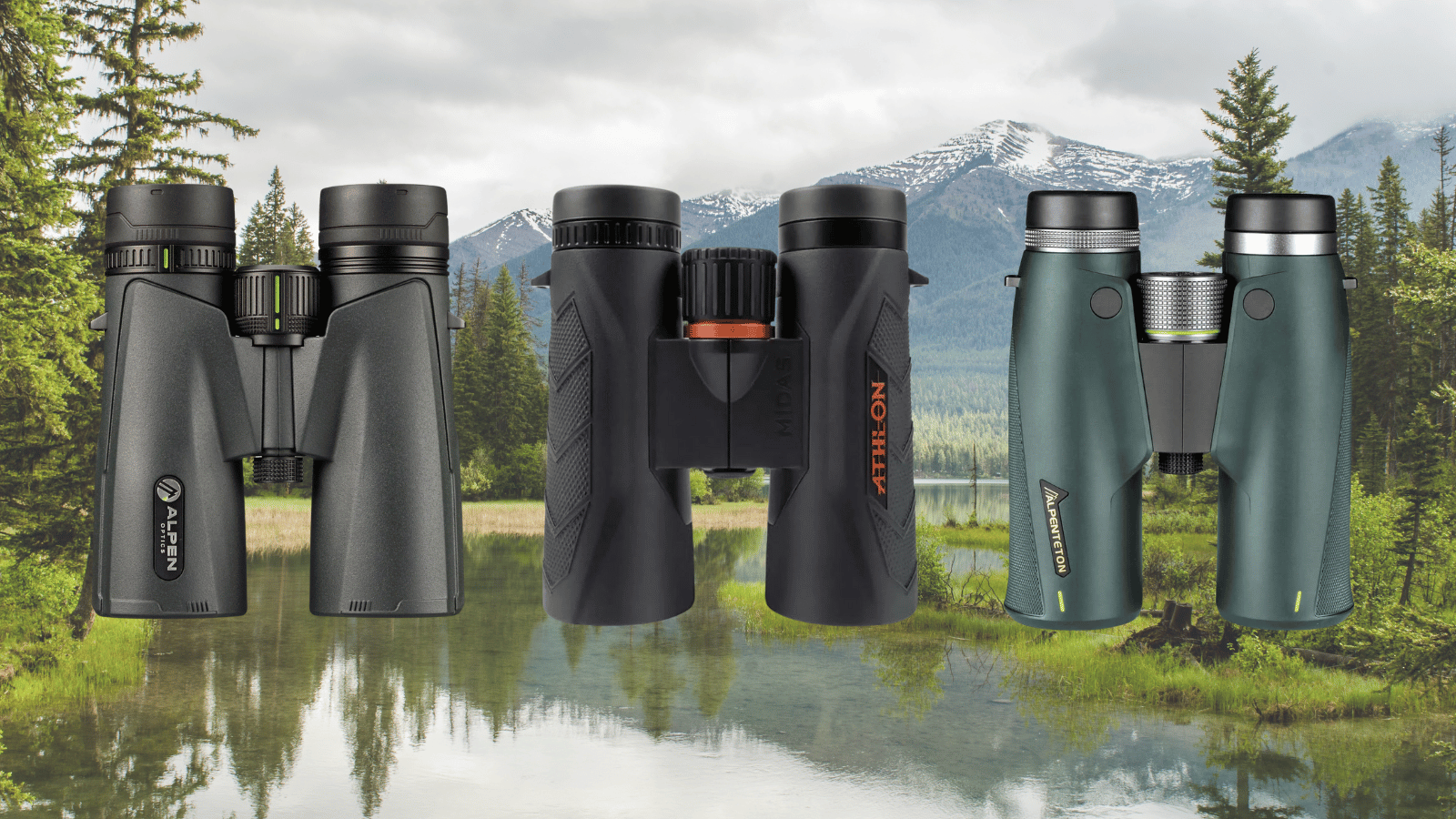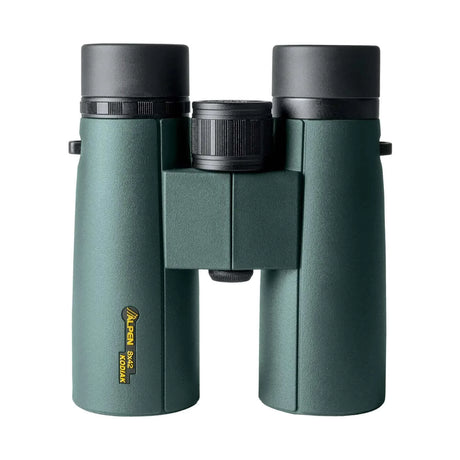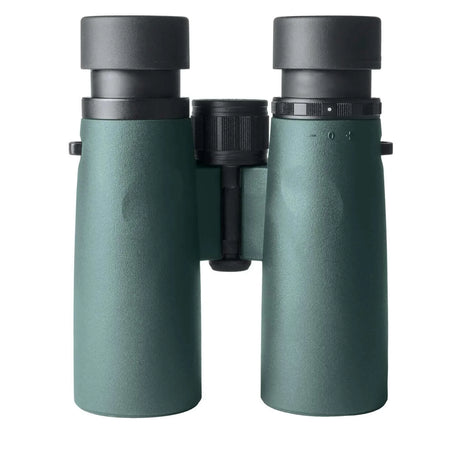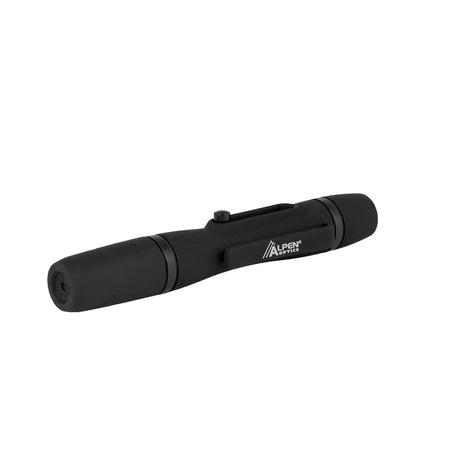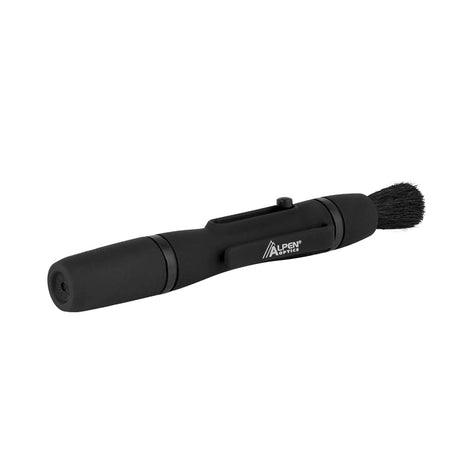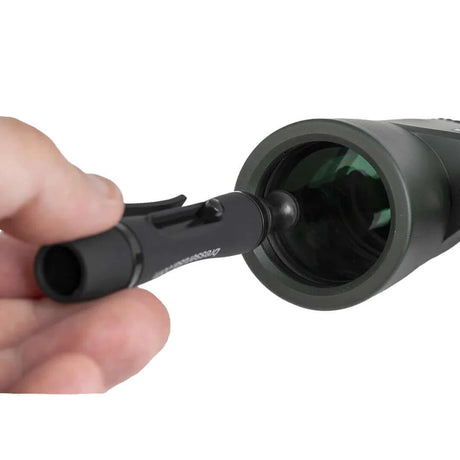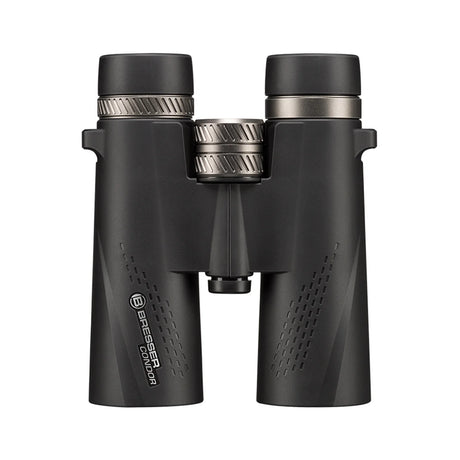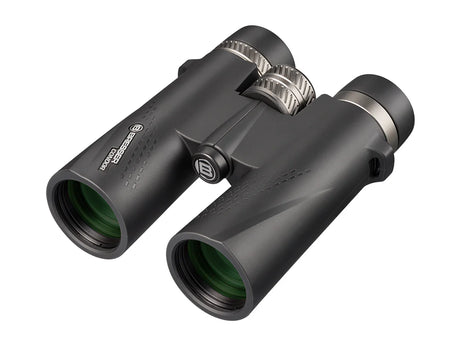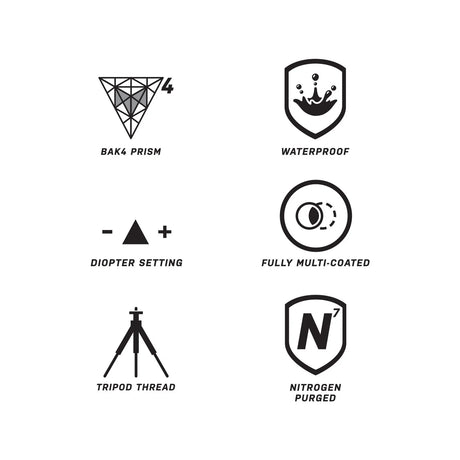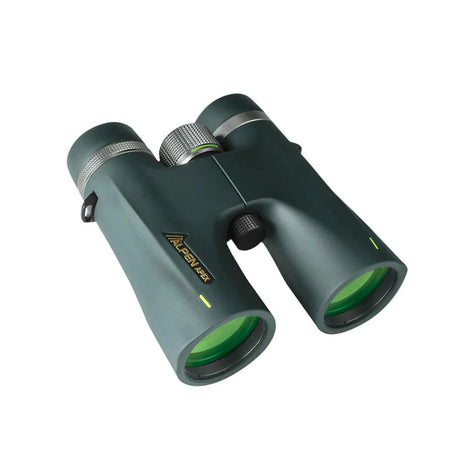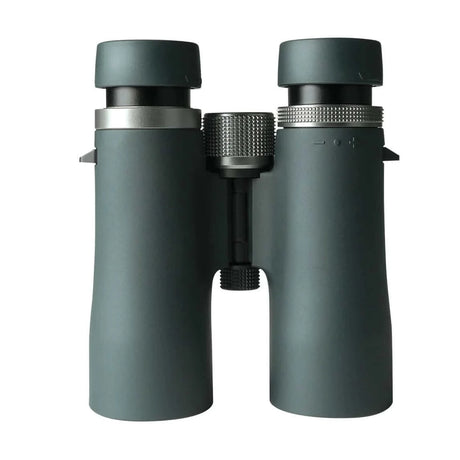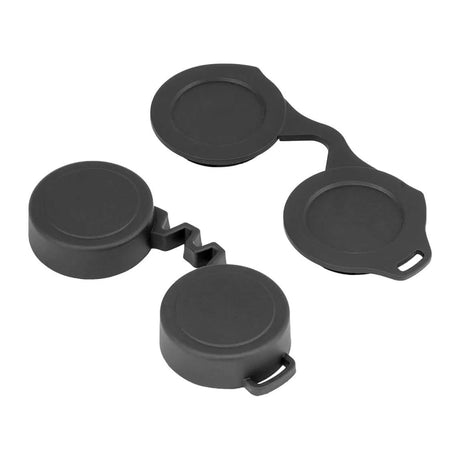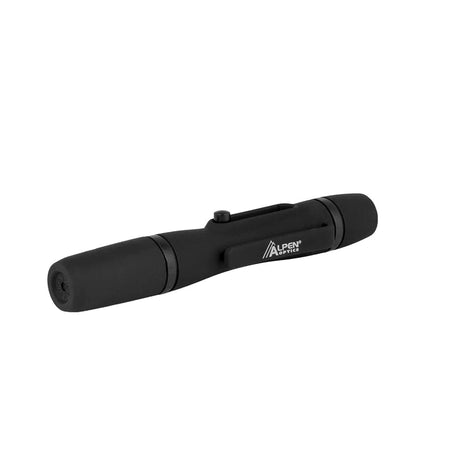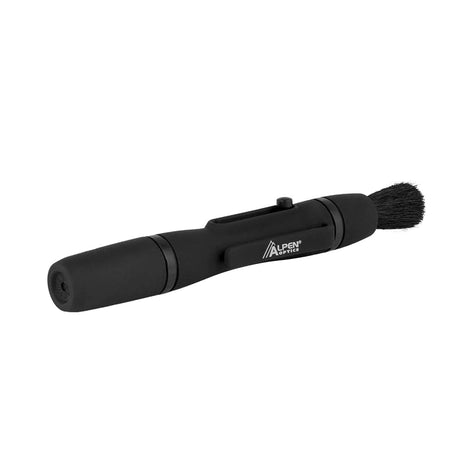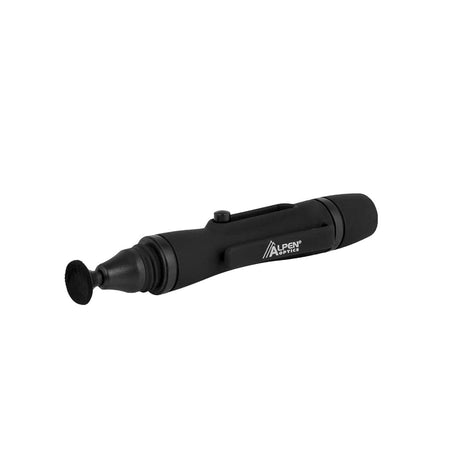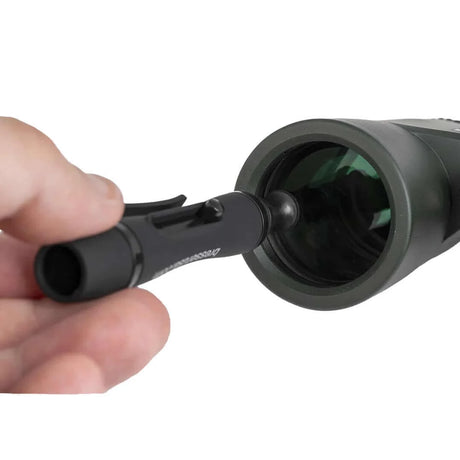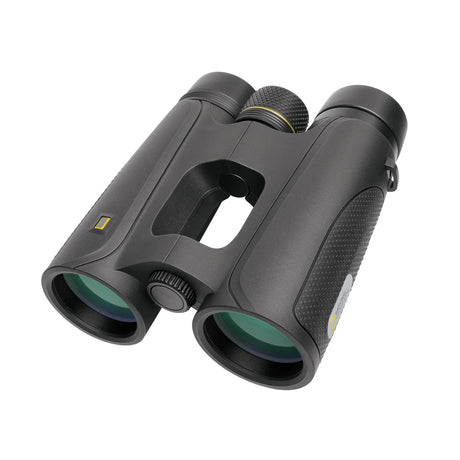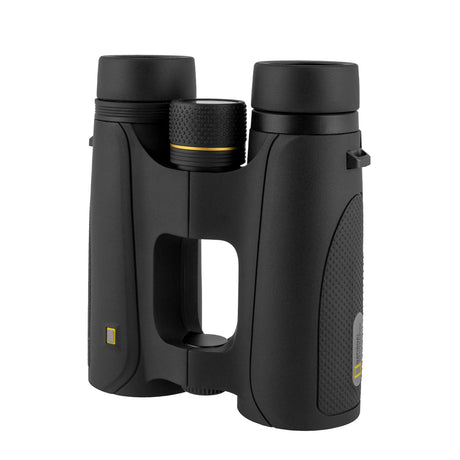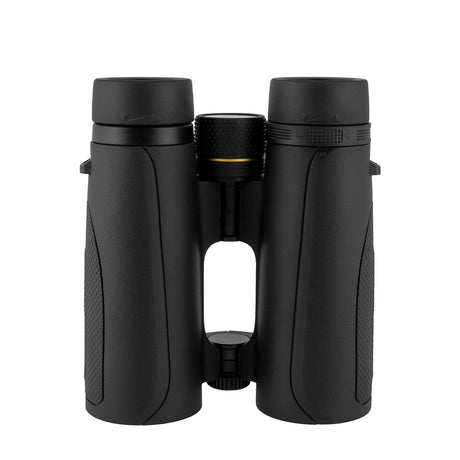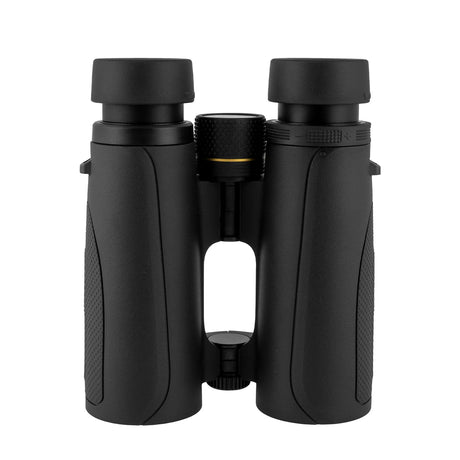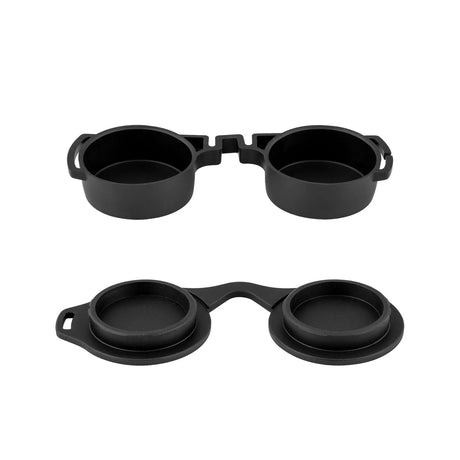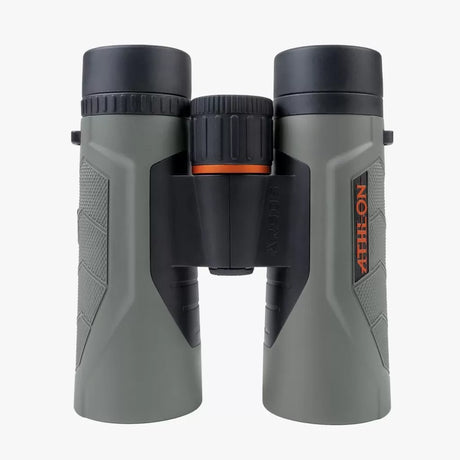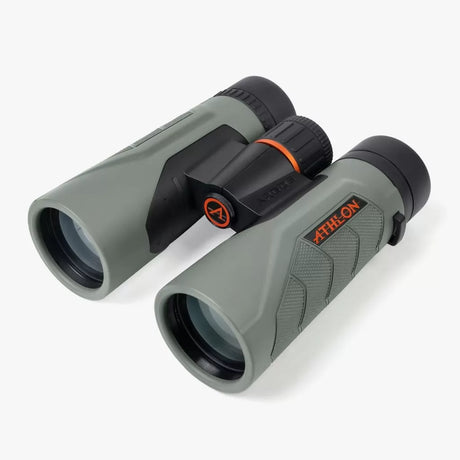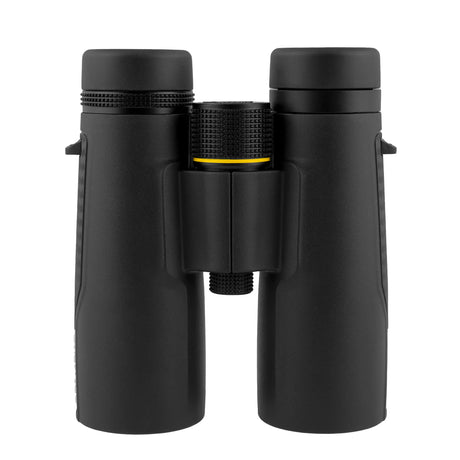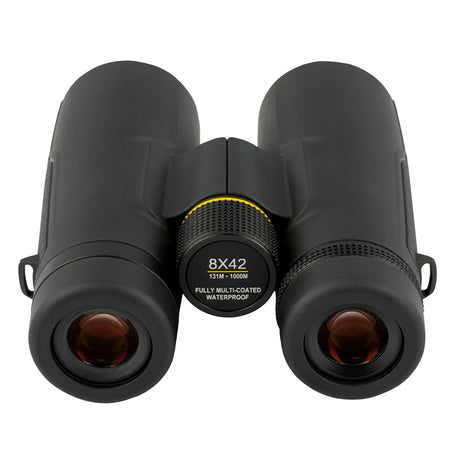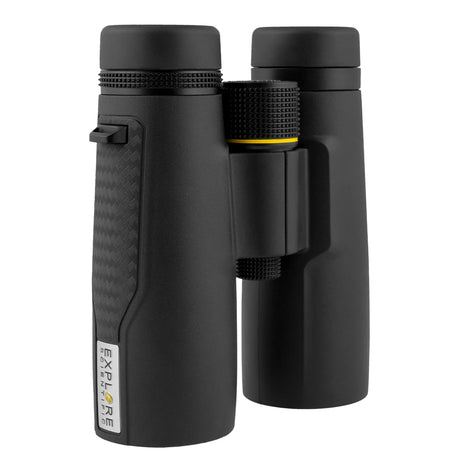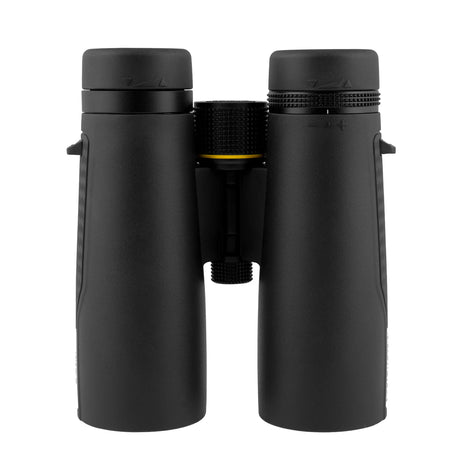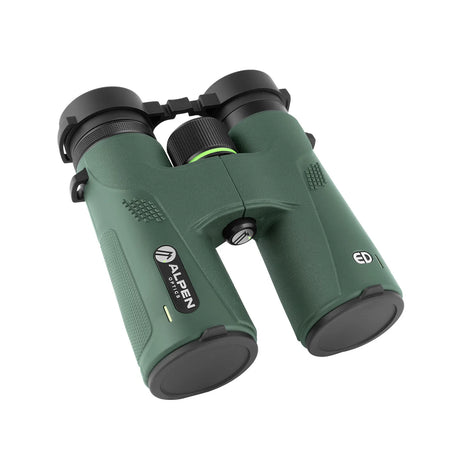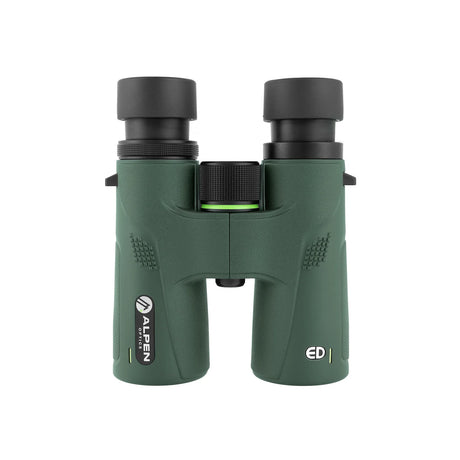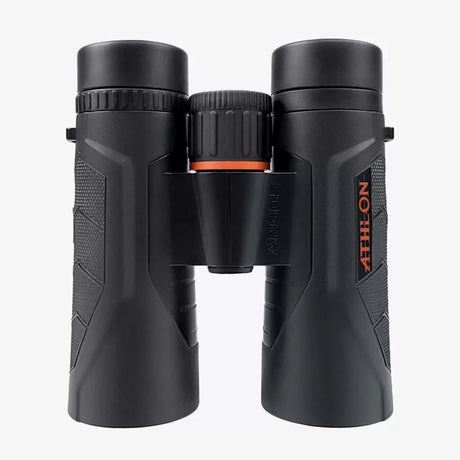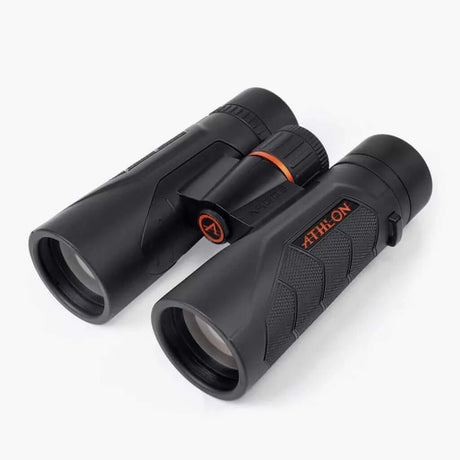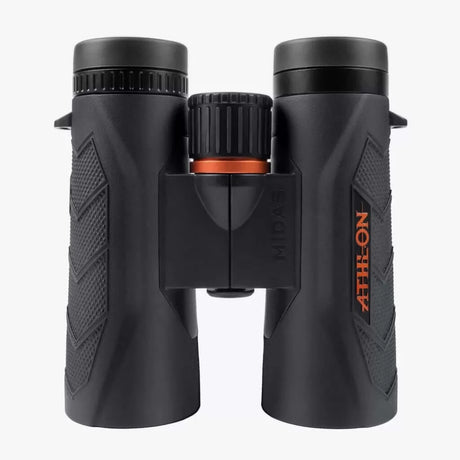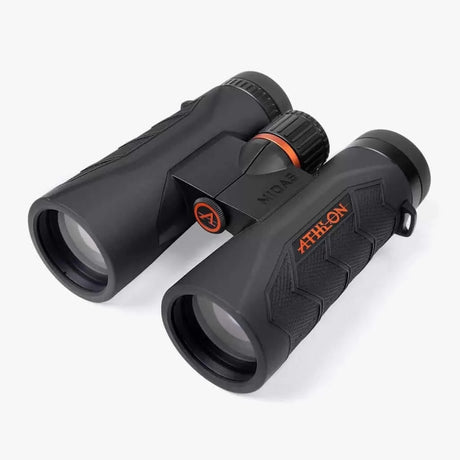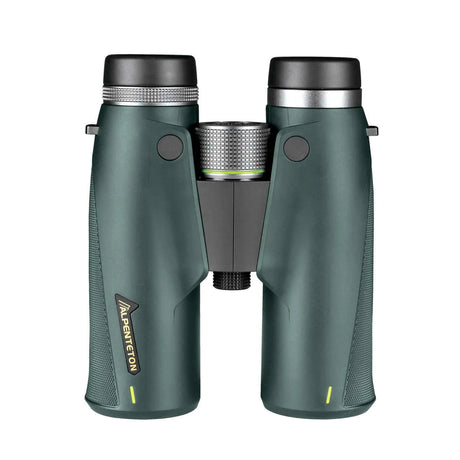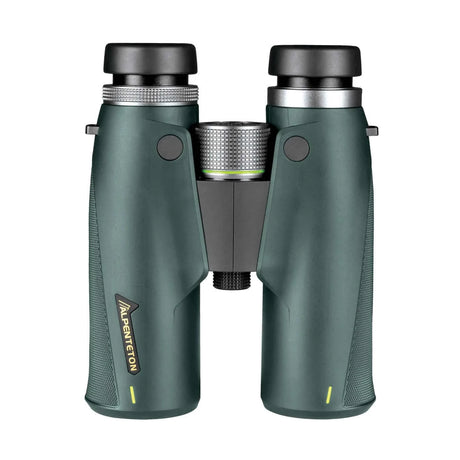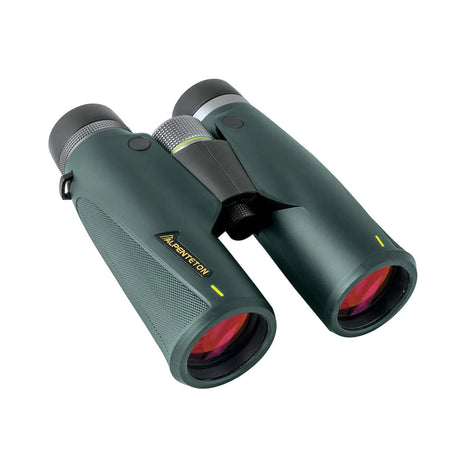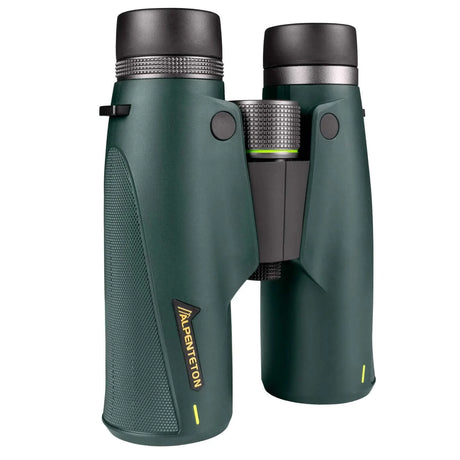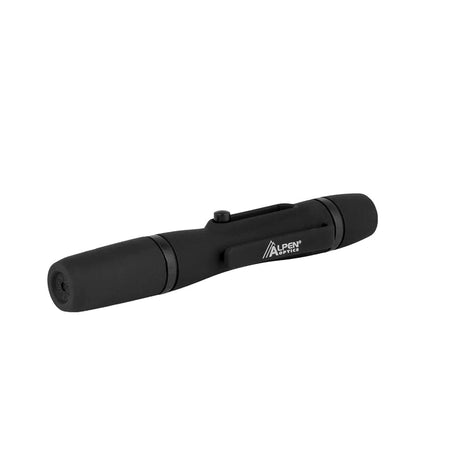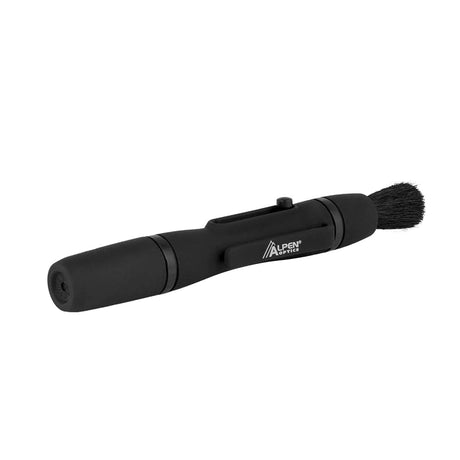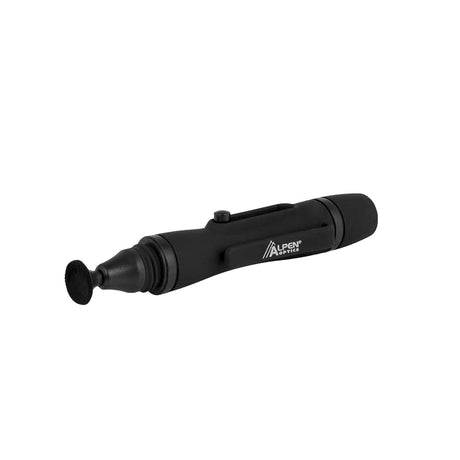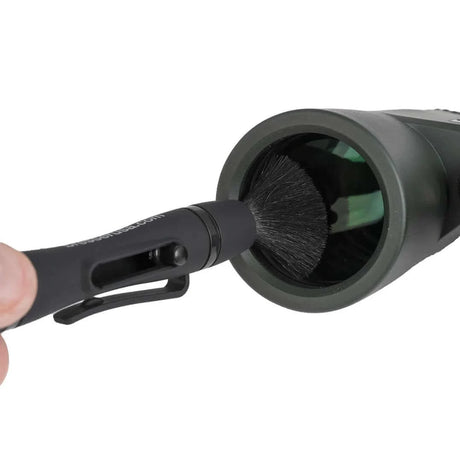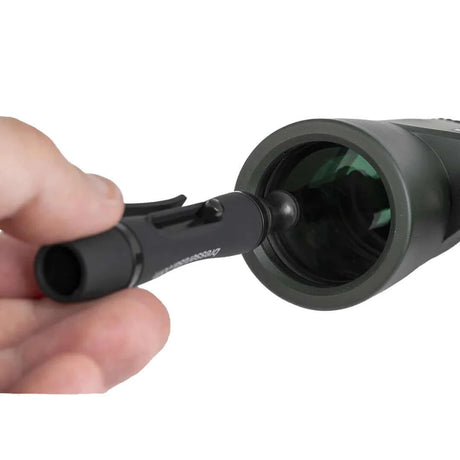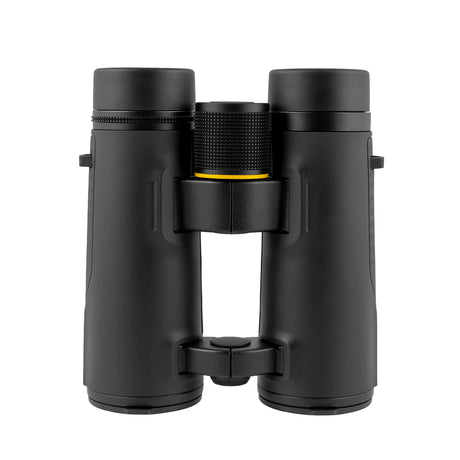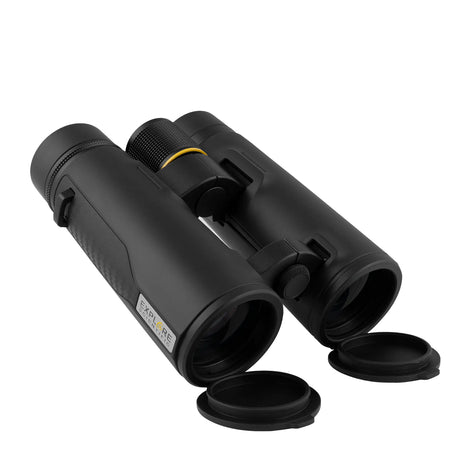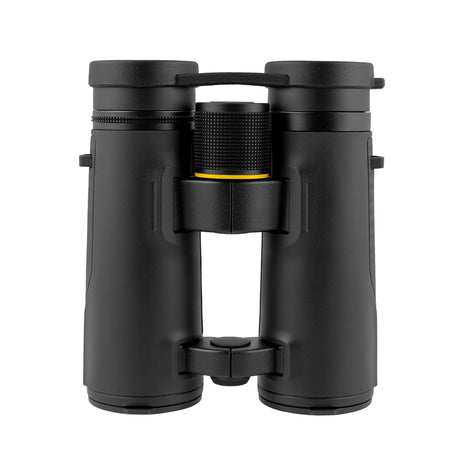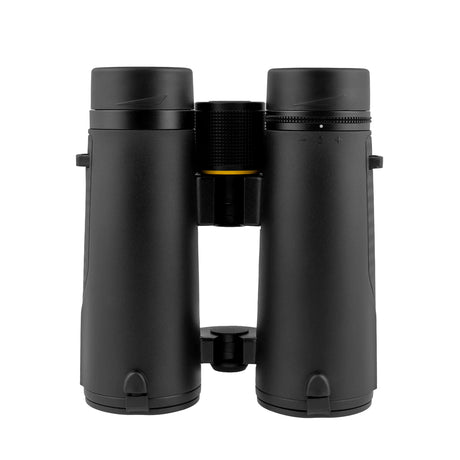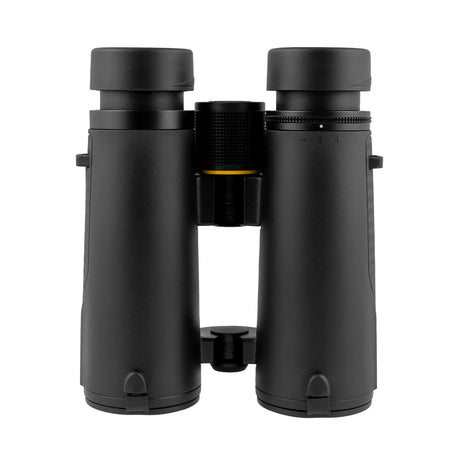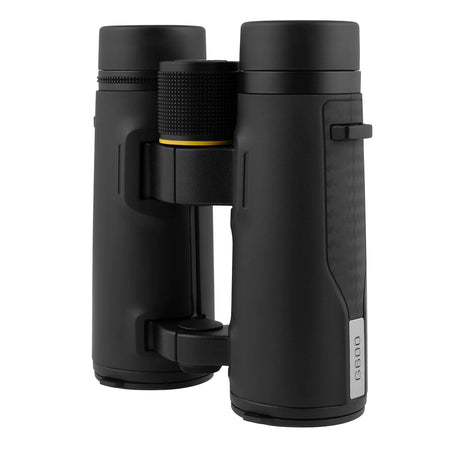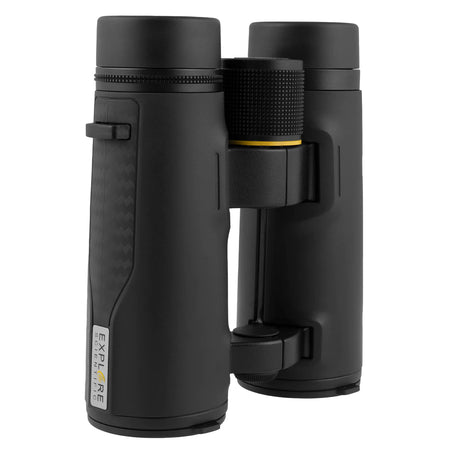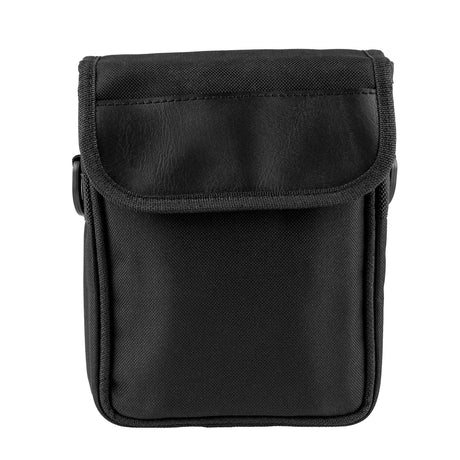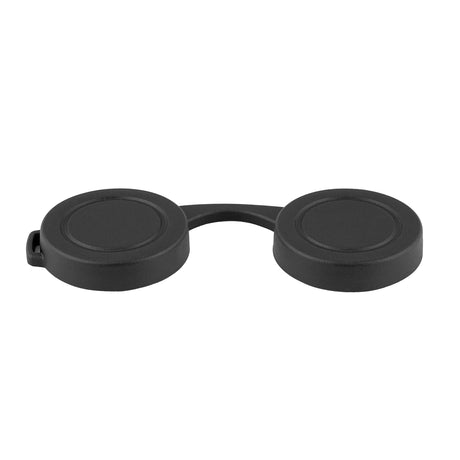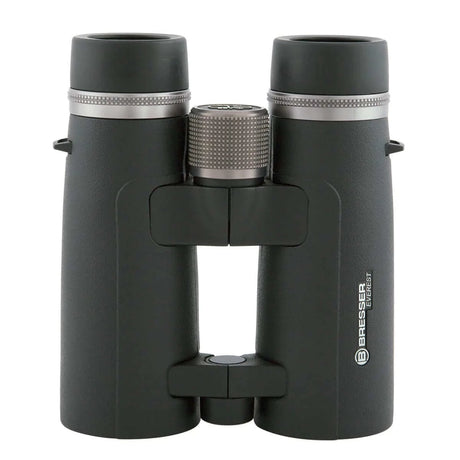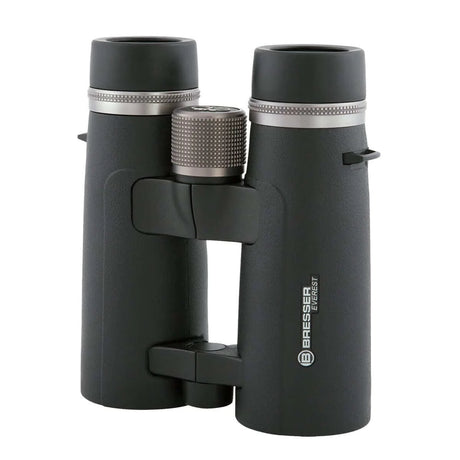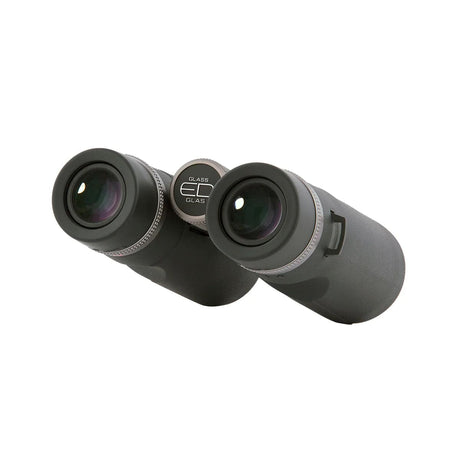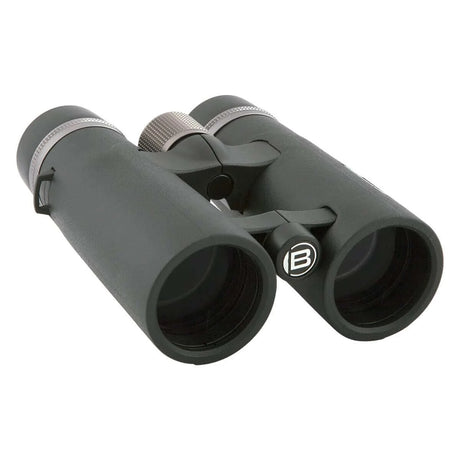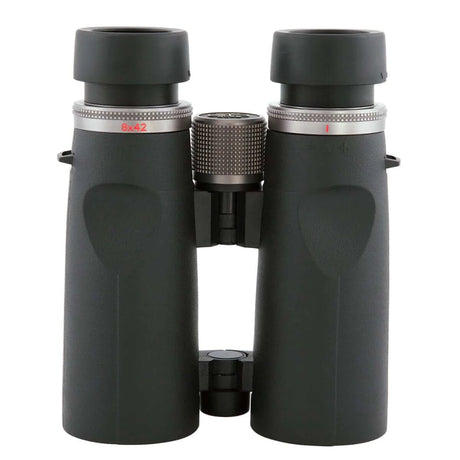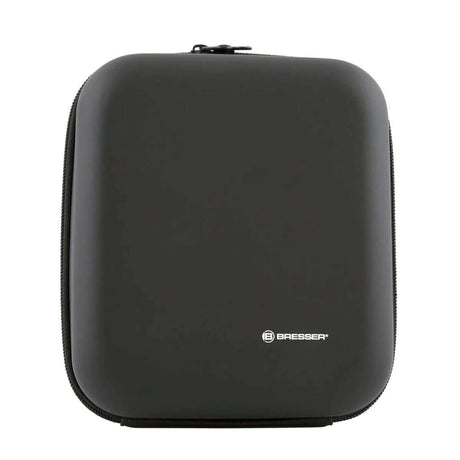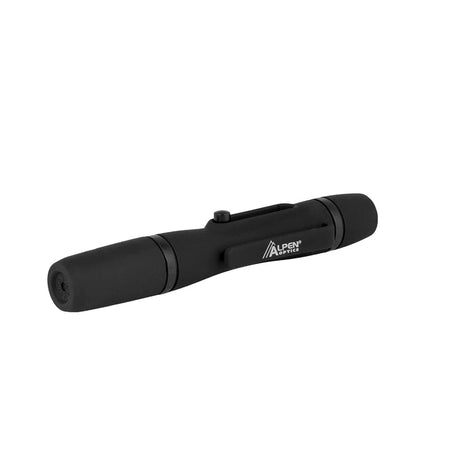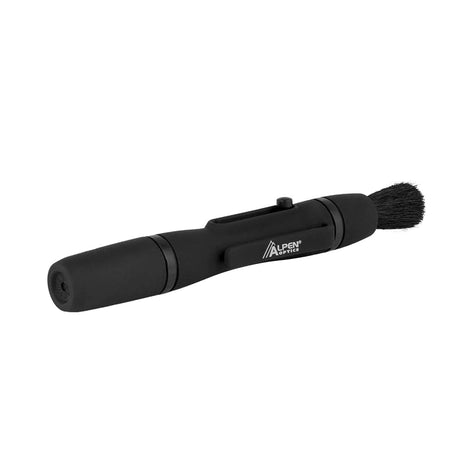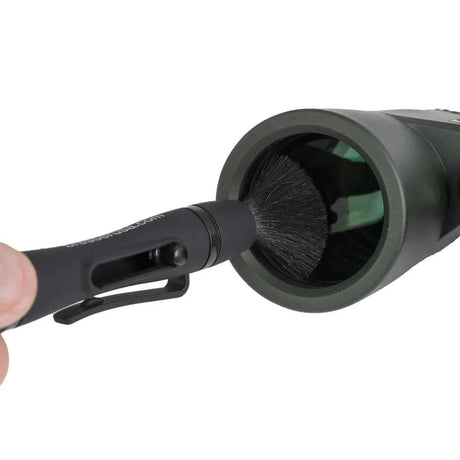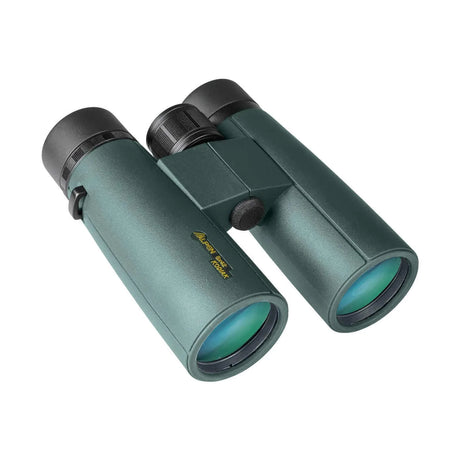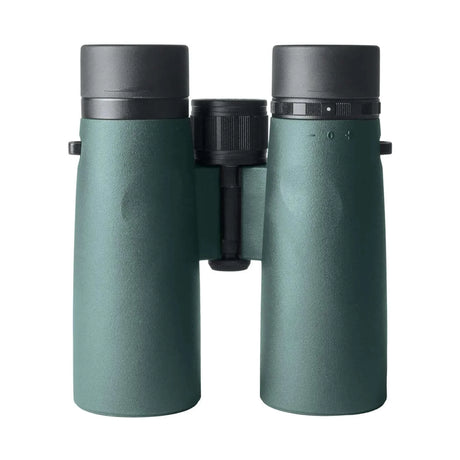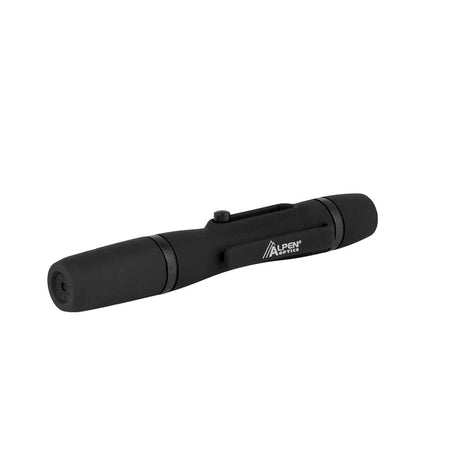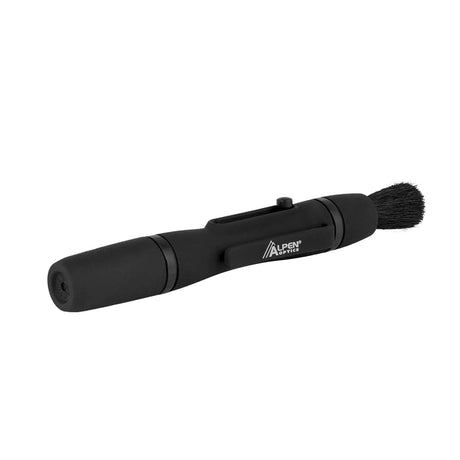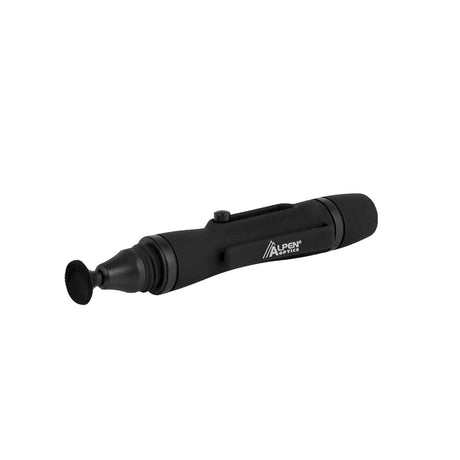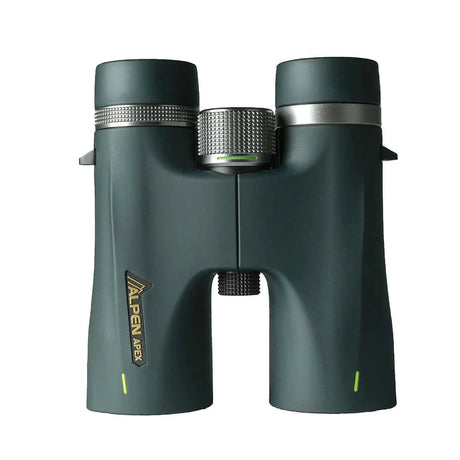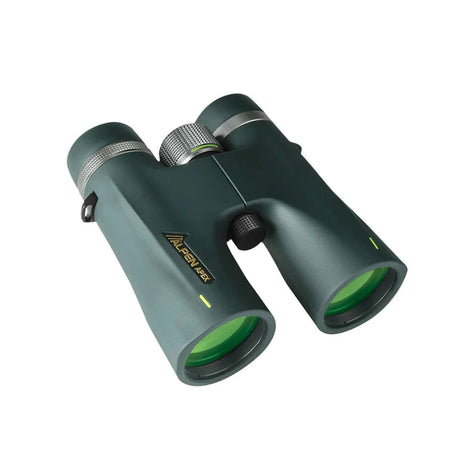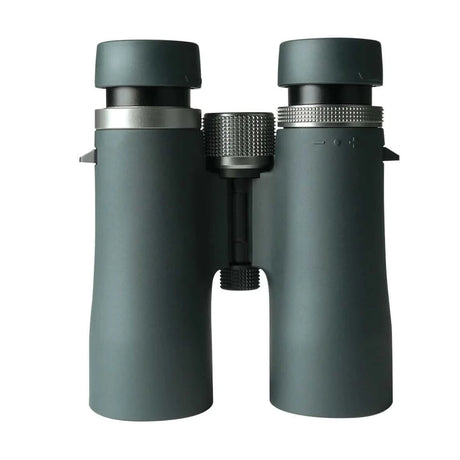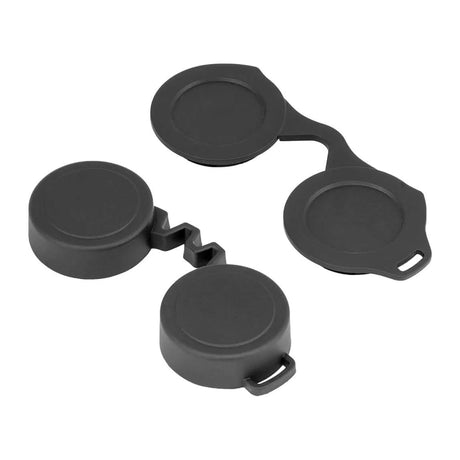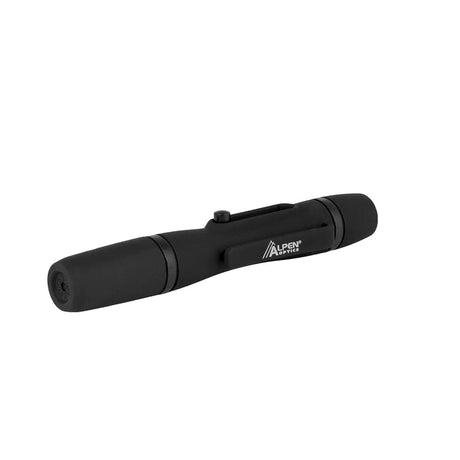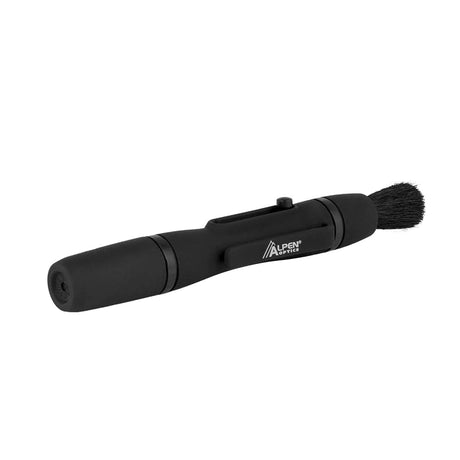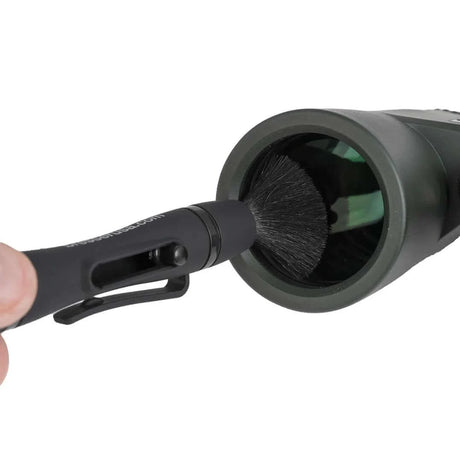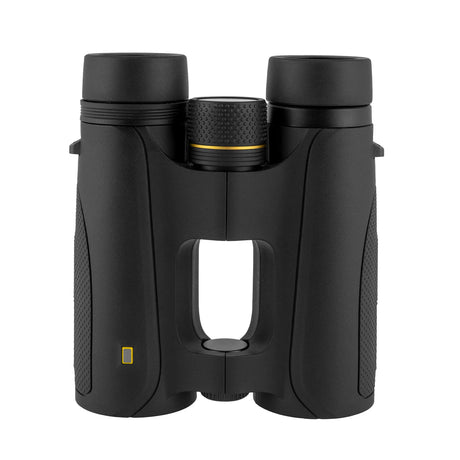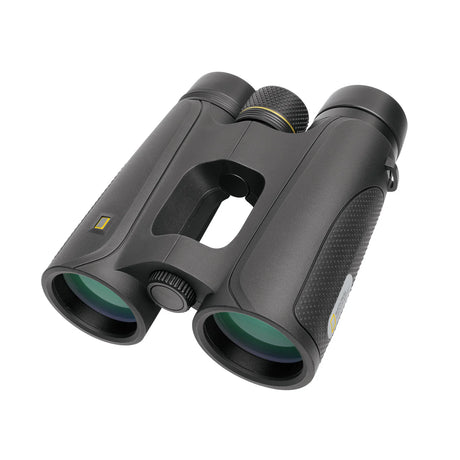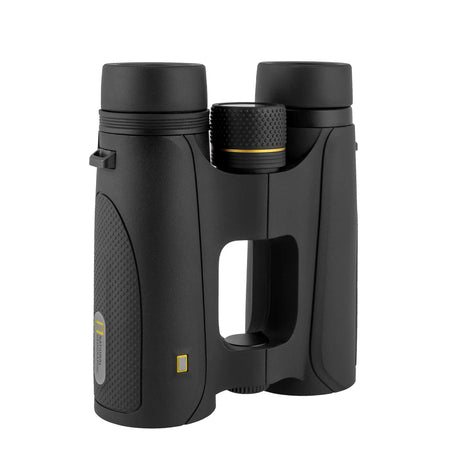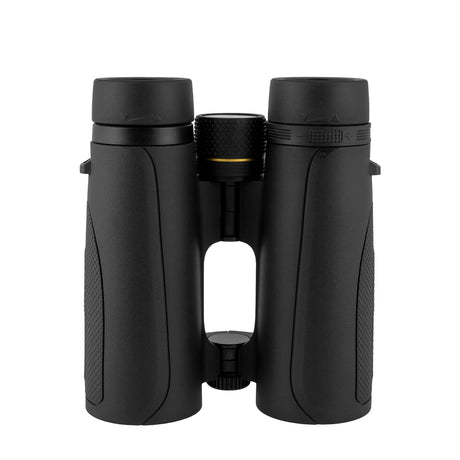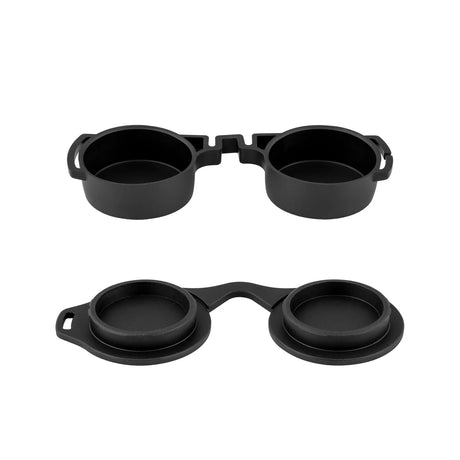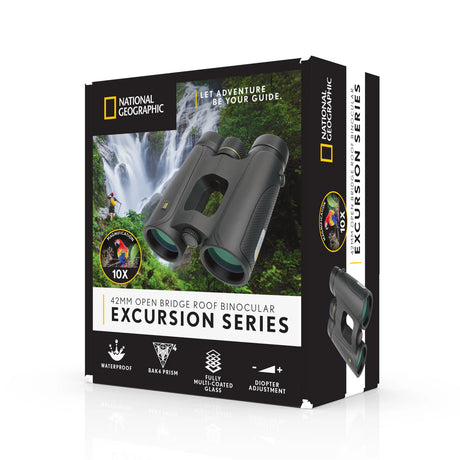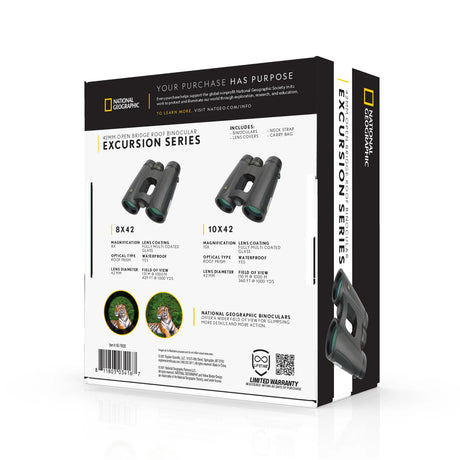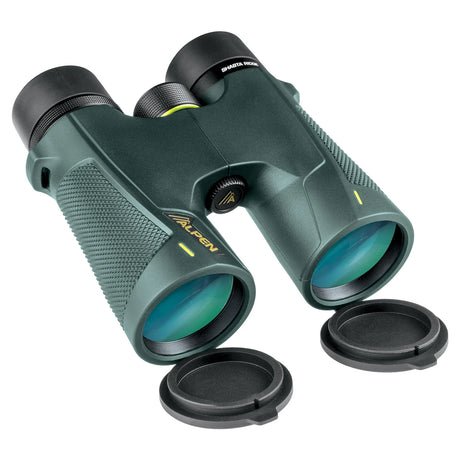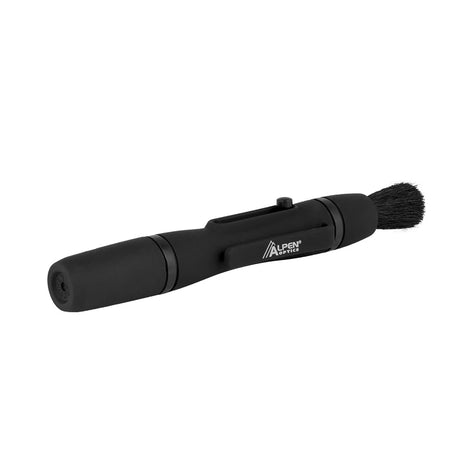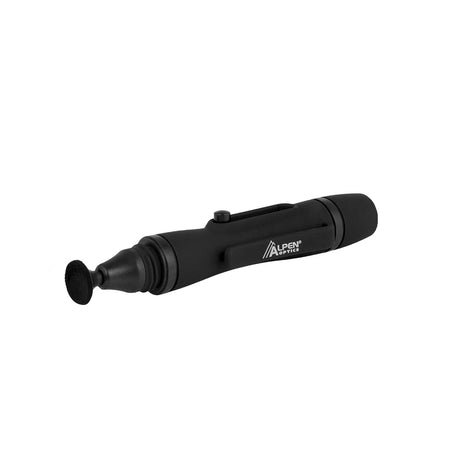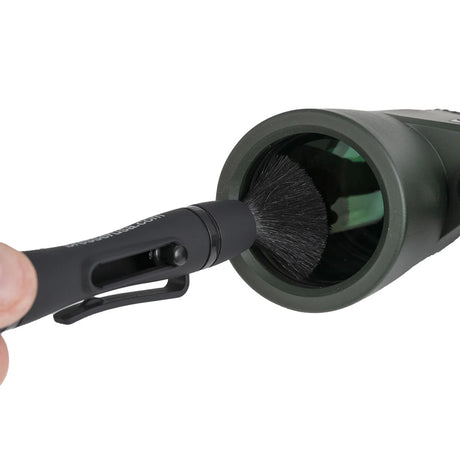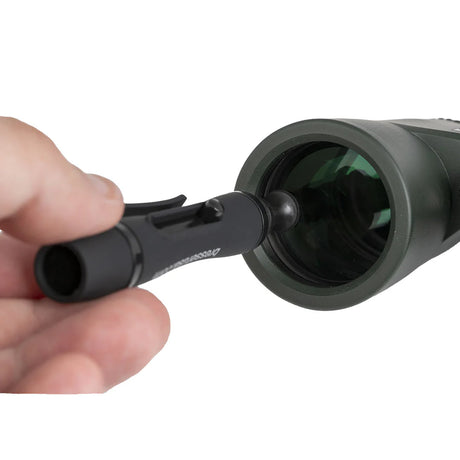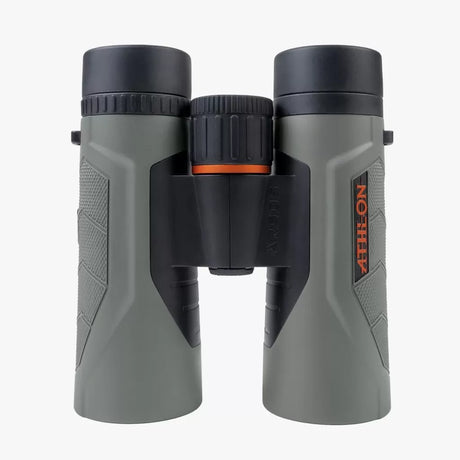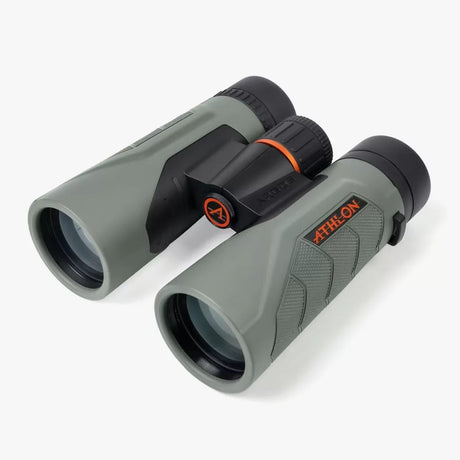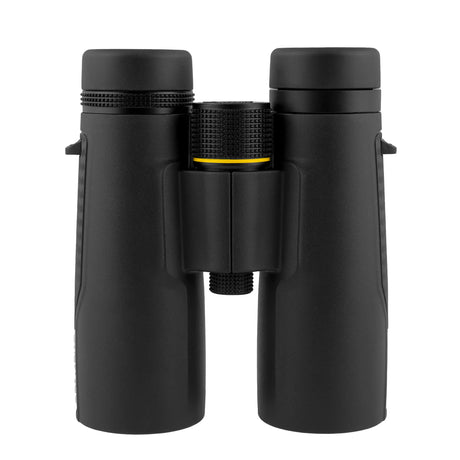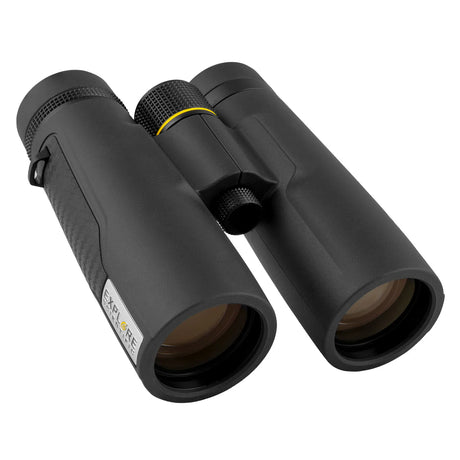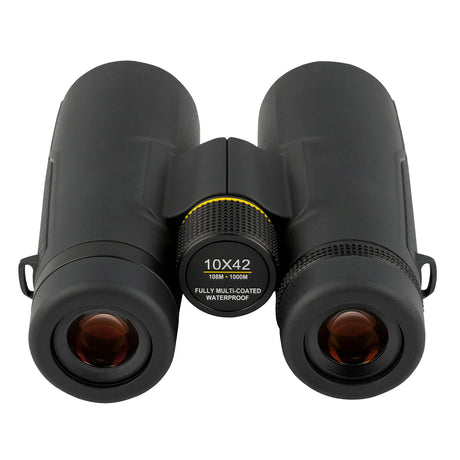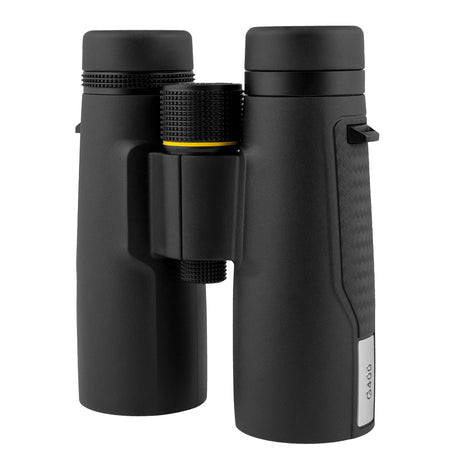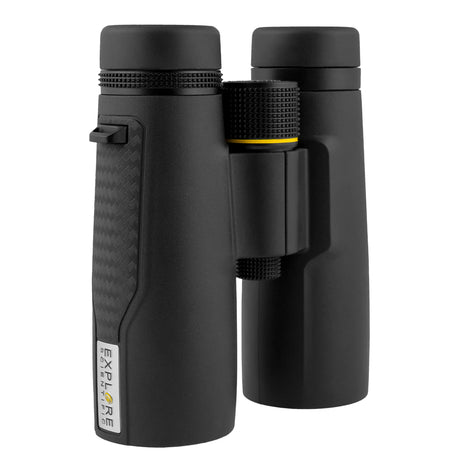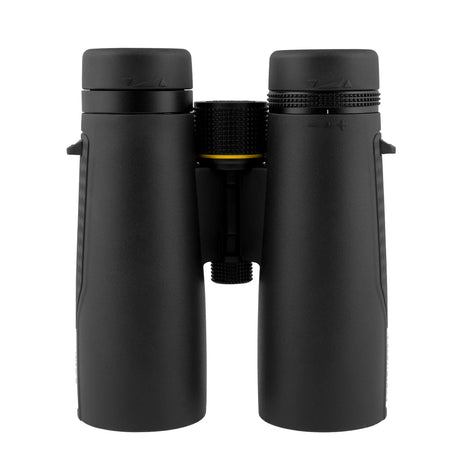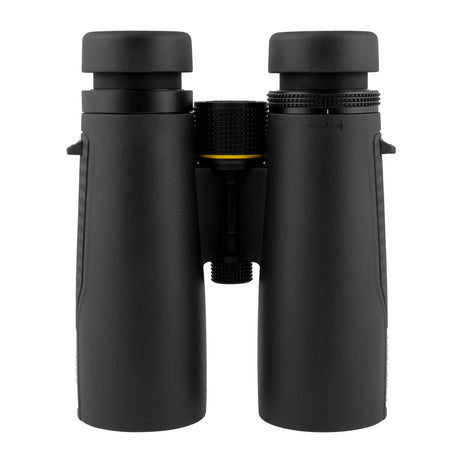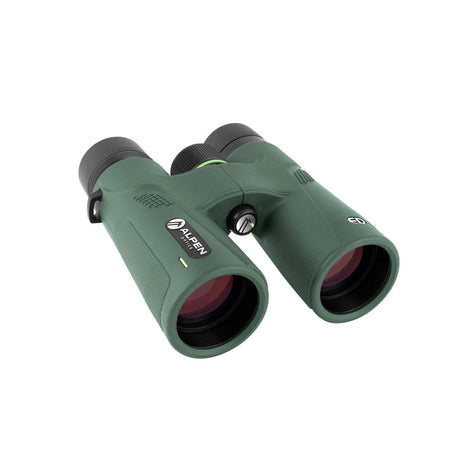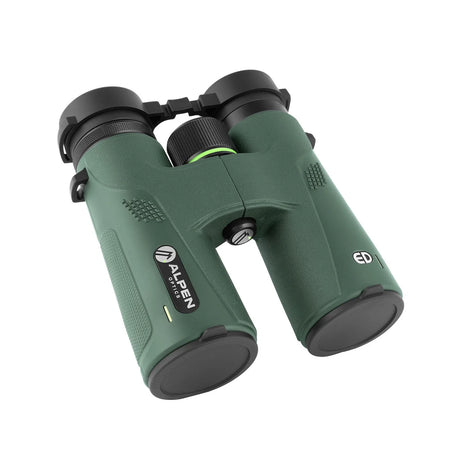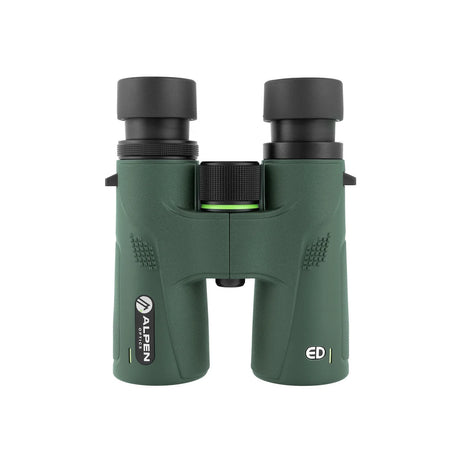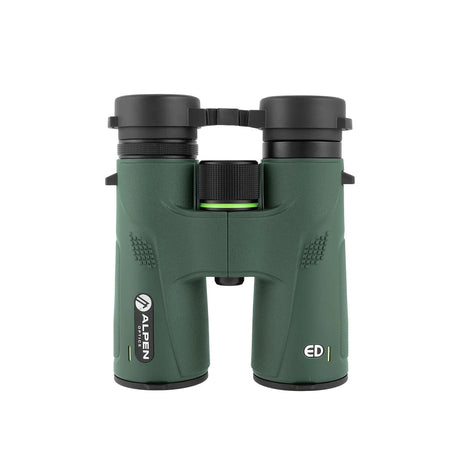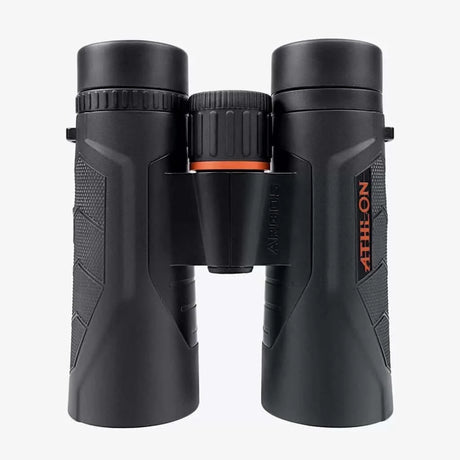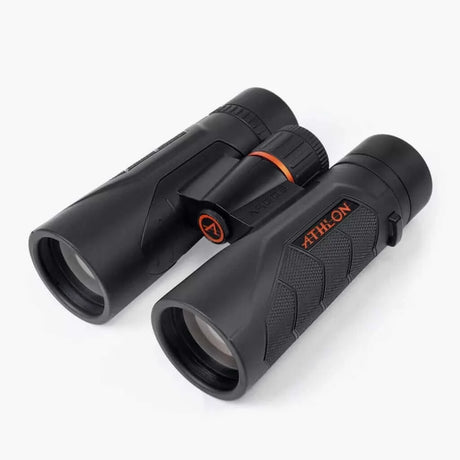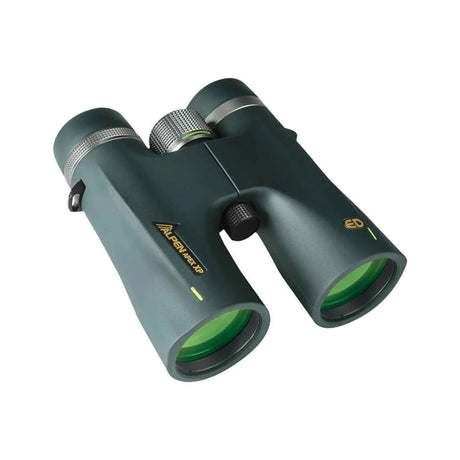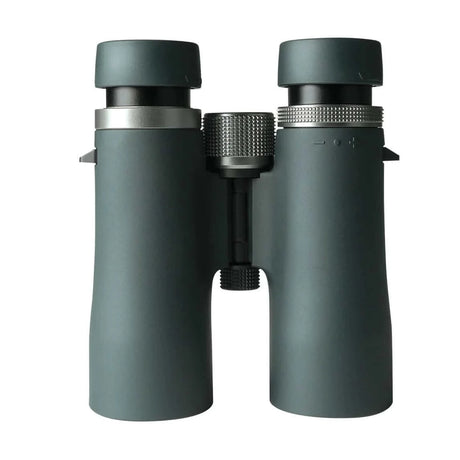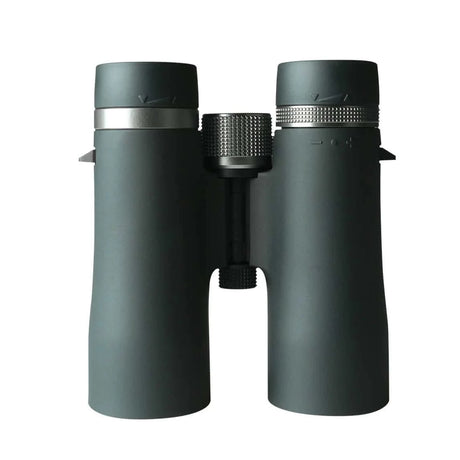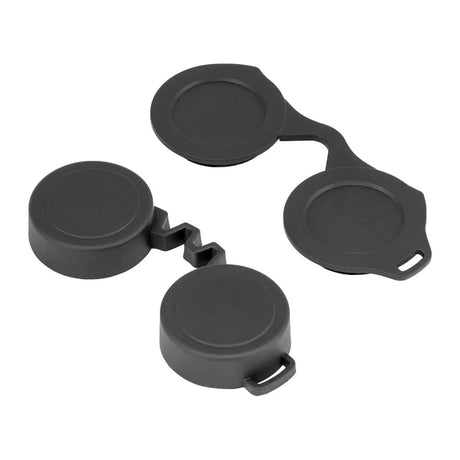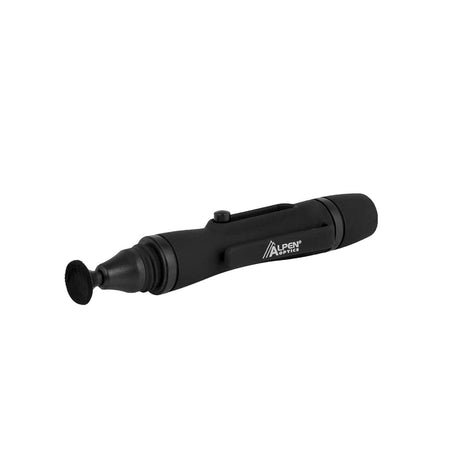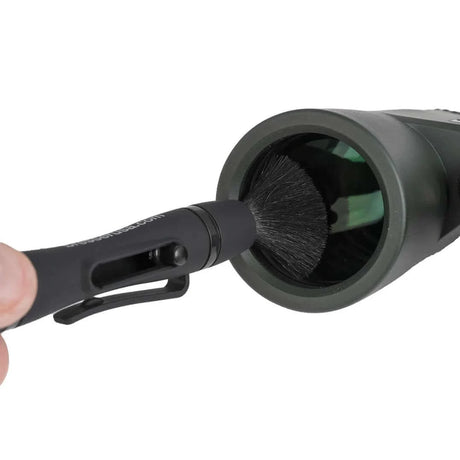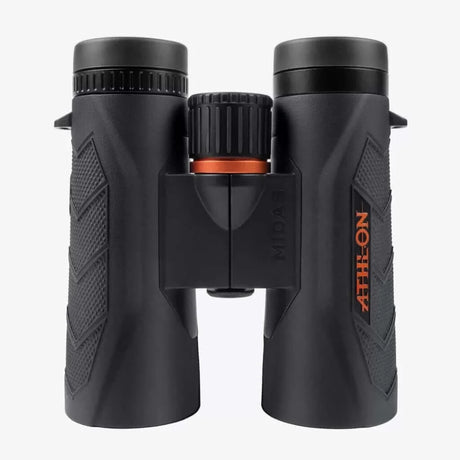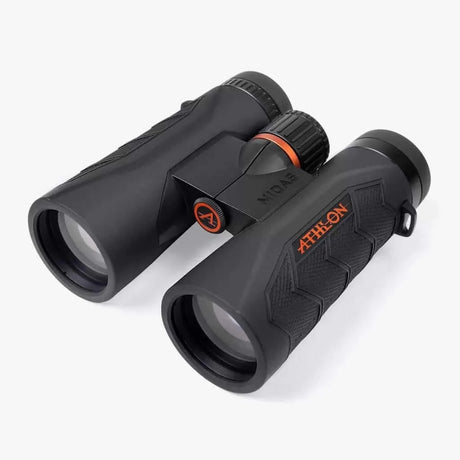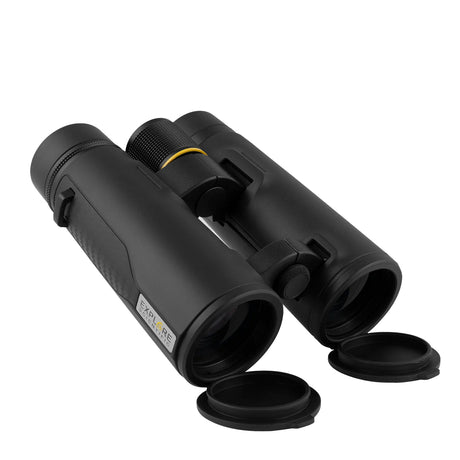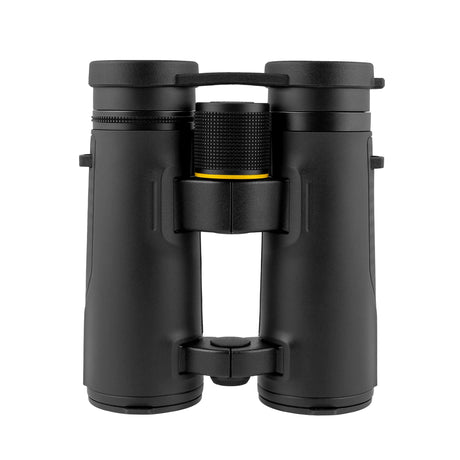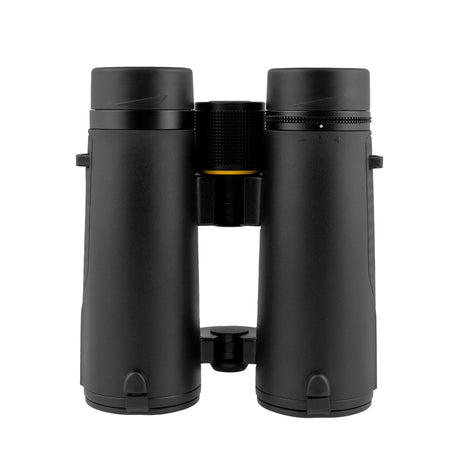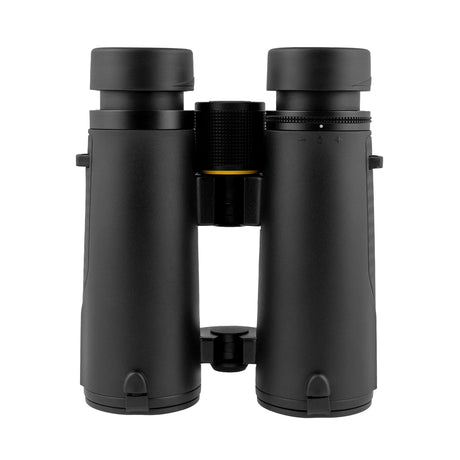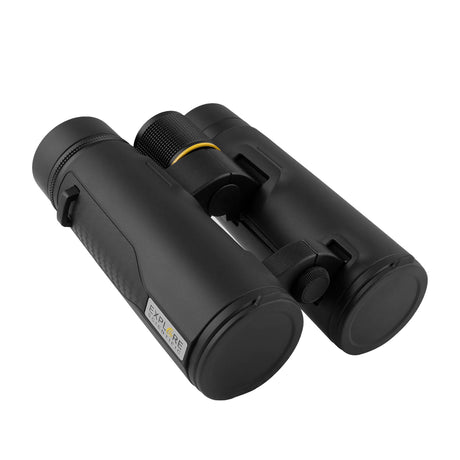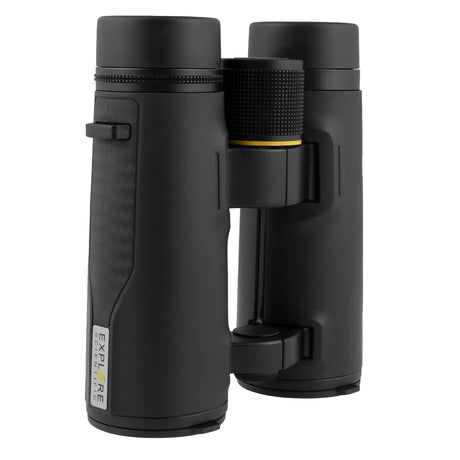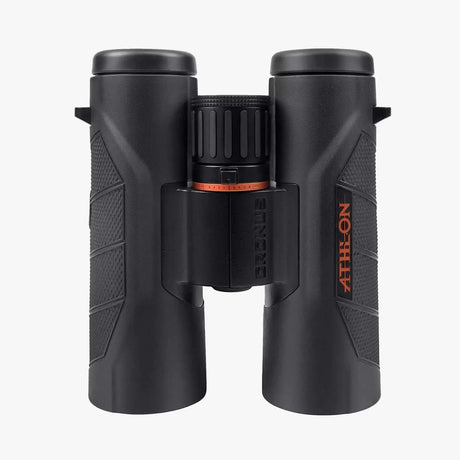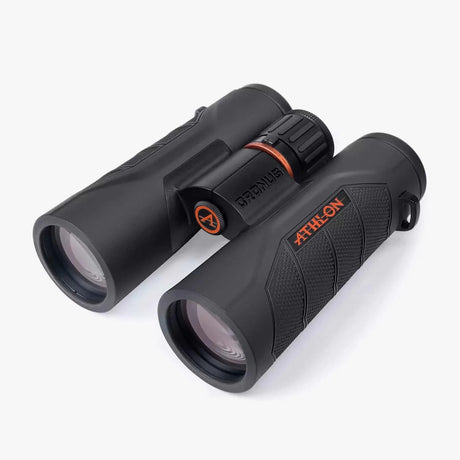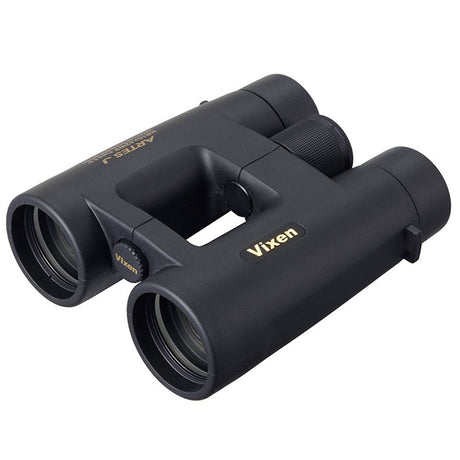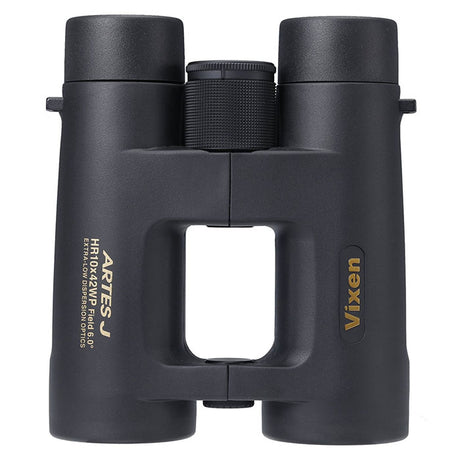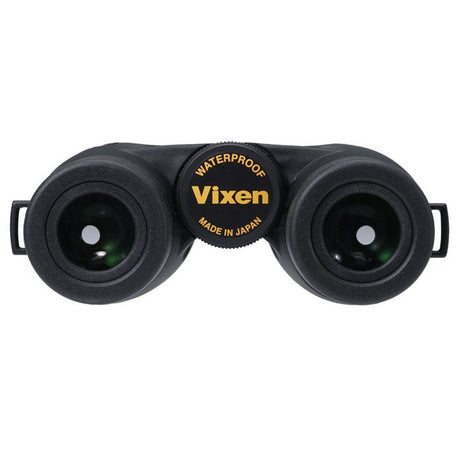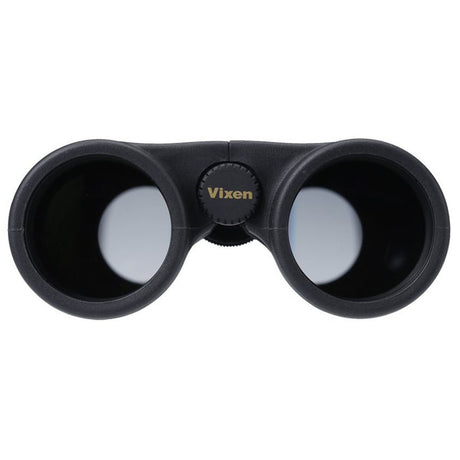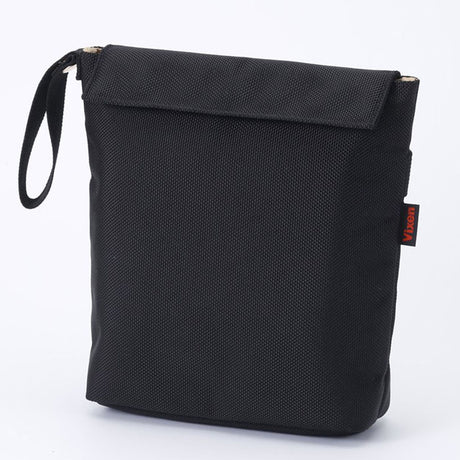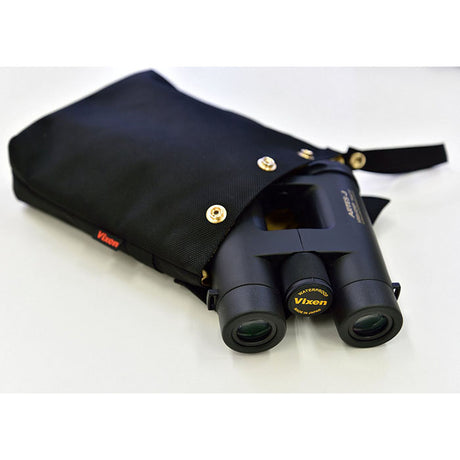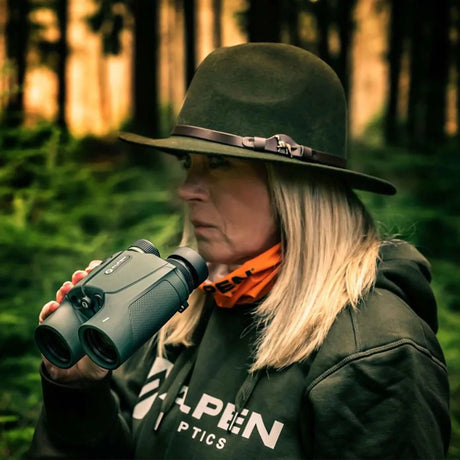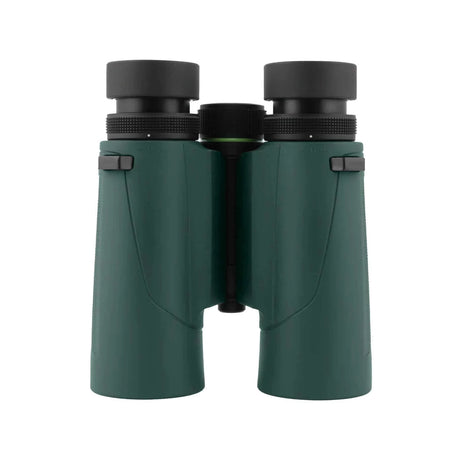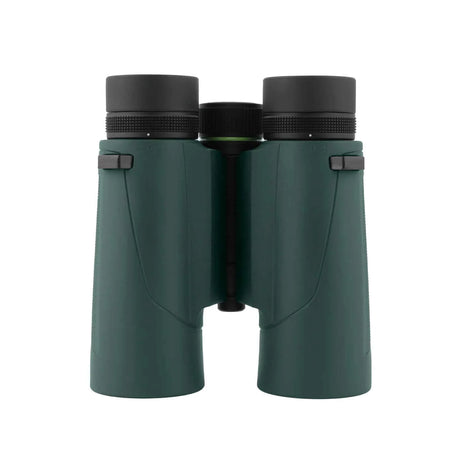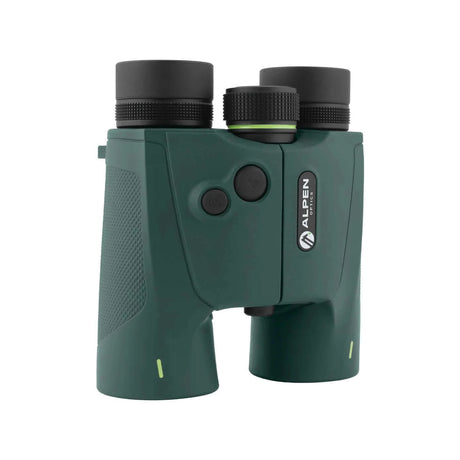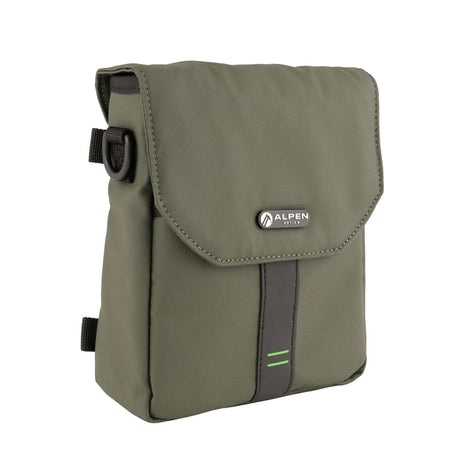If you’re considering buying a new pair of binoculars, it’s hard to ignore the popularity of 8x42 and 10x42 models. These two sizes are widely regarded as the “sweet spot” for outdoor use, offering excellent balance between magnification, field of view, and ease of use. But which one should you choose?
In this post, we’ll look at the differences between these models in depth, discuss key factors to consider when purchasing, and provide useful tips to help you make the best investment for your outdoor adventures.
Understanding the Specs: What Do 8x42 and 10x42 Mean?
Let’s break down these numbers so you know exactly what you’re getting when you see “8x42” or “10x42” on binocular specs.
- 8x or 10x Magnification: This first number is the magnification power. With 8x magnification, objects appear 8 times closer, while 10x makes objects appear 10 times closer. While 10x brings more detail, 8x tends to be steadier and offers a broader field of view, which we’ll dive into below.
- 42mm Objective Lens Diameter: The “42” in both models refers to the diameter of the objective lens in millimeters. The larger the objective lens, the more light it can gather. A 42mm lens is perfect for most outdoor scenarios, balancing brightness and portability.
The Benefits and Trade-offs of Magnification: 8x vs. 10x
When you’re ready to buy, it’s crucial to understand how magnification will impact your experience.
8x Magnification (8x42):
- Wider Field of View: Generally around 400 feet at 1,000 yards. This wider view is ideal for beginners or anyone tracking moving objects, like birds or wildlife, because it allows you to see more of your surroundings at once.
- Greater Stability: Lower magnification means less image shake, making 8x42 easier to use for long periods without a tripod. This is particularly beneficial if you’ll be walking or standing on uneven ground.
- Quick Scanning: If you need to scan large areas, like forests or open fields, 8x42 binoculars make it easier to spot and follow moving subjects.
10x Magnification (10x42):
- Higher Detail on Distant Objects: With 10x, you’ll see more intricate details at a distance, which is excellent for birdwatching in open areas or observing mountain landscapes. The field of view narrows to about 330 feet at 1,000 yards, which is still good but may require more precision when locating fast-moving subjects.
- Better for Open Terrain: 10x42 binoculars perform best when subjects are farther away, as they bring in more detail, ideal for birders and hunters looking across open fields or at the water’s edge.
- Slightly More Image Shake: The higher magnification amplifies small hand movements, so these binoculars can benefit from a tripod or monopod for long viewing sessions.
Key Buying Tip: If you’re new to binoculars or looking for a versatile option, start with 8x42. For experienced users who want detailed close-ups, especially in open spaces, 10x42 is worth the extra precision.
Performance in Low-Light and Bright Light Conditions
When choosing between 8x42 and 10x42, it’s essential to consider where and when you’ll be using them, especially regarding lighting conditions.
Low-Light Performance:
- 8x42 Advantage: Thanks to a larger exit pupil (5.25mm), 8x42 binoculars generally perform better in low-light conditions, like dawn or dusk. This can be crucial if you’re planning to use them for wildlife observation during these times, when animals are often most active.
- 10x42 Trade-off: With an exit pupil of 4.2mm, 10x42 binoculars require slightly more light to produce a bright, clear image. While still effective in low light, they may not be as bright as 8x42 in shaded or low-light settings.
Bright Light Performance:
- Both Models Shine: In full daylight, both 8x42 and 10x42 binoculars perform well. The 10x42’s added zoom can give you a close-up of distant details, while the 8x42 provides a steadier image for scanning larger areas.
Recommendation: If you’ll primarily be in dimmer lighting or shaded areas, consider 8x42 for better low-light clarity. For full-sun use or stargazing in clear skies, either model will serve well, though the 10x42 will show more detail.
Specific Uses: How to Choose Based on Your Activities
Your choice should also depend on the specific activities you plan to enjoy with your binoculars. Here’s a breakdown to help you match the right model to your needs:
Birdwatching:
- 8x42: The wide field of view helps locate and track birds quickly, especially in wooded areas or during flight.
- 10x42: If you’re birding in open spaces where birds are perched far away, 10x42 offers sharper details.
Hiking and General Outdoor Exploration:
- 8x42: For hiking, 8x42 is more portable and offers a broad view, helping you enjoy sweeping landscapes without focusing on individual details.
- 10x42: If you’re interested in specific sights like distant mountain peaks or want to examine distant landmarks, 10x42 can be an exciting choice. However, you’ll need a steady hand or a place to rest for longer views.
Hunting:
- 8x42: Great for close-to-mid-range spotting in thick vegetation, where you’ll want to cover large areas quickly to spot movement.
- 10x42: Offers greater detail at long distances, making it a favorite for hunters in open areas where spotting an animal’s movements at a distance is key.
Stargazing:
- 10x42: Preferred for casual astronomy because it brings in more detail on celestial bodies. A tripod will help eliminate image shake for night sky viewing.
Quick Tip: If you need all-day versatility for a variety of landscapes, go with 8x42. For focused, specific activities (like detailed birding or hunting in open spaces), 10x42 may offer the detail you need.
Portability, Weight, and Long-Term Comfort
Choosing the right binoculars isn’t just about image quality; it’s also about comfort and portability, especially for those longer sessions.
- Weight Comparison: On average, 8x42 binoculars are slightly lighter, usually by 2-3 ounces. While this might seem minor, it makes a difference when holding them for hours. Most 8x42 models weigh around 22-24 ounces, while 10x42 models tend to weigh 25-27 ounces.
- Handheld Stability: With higher magnification comes a slight increase in image shake. If you’ll be holding your binoculars by hand and want maximum stability, 8x42 is the more comfortable choice.
- Eye Relief: Eye relief is particularly important for eyeglass wearers. Look for models with 16-18mm of eye relief to ensure a full field of view. Many quality binoculars in both 8x42 and 10x42 sizes come with adjustable eyecups, which can make a big difference for extended viewing sessions.
Comfort Tip: For hikes and longer use without a tripod, 8x42 will be lighter and steadier. If you’re planning on shorter viewing sessions or using a tripod, 10x42 can offer excellent results without being too cumbersome.
Price and Quality Considerations: What Should You Expect?
When shopping for binoculars, prices can vary widely based on brand, materials, and lens quality. Here’s a breakdown of what to expect in each price range, along with specific models known for their performance and value.
Entry-Level Models ($100-$300)

For beginners or occasional users, entry-level binoculars offer solid reliability and value without breaking the bank. In this price range, you’ll find models with durable construction, clear optics, and essential features ideal for birdwatching, hiking, and general outdoor observation.
- Alpen Chisos 10x42 ED Binoculars: Equipped with ED (Extra-Low Dispersion) glass for improved color accuracy, these binoculars deliver impressive sharpness and clarity. With 10x magnification, they’re perfect for spotting distant wildlife, making them a smart choice for budget-conscious birdwatchers.
- Alpen Chisos 8x42 ED Binoculars: Offering a wider field of view and steadier image than the 10x model, the Alpen Chisos 8x42 is great for tracking moving subjects, like birds or wildlife. ED glass minimizes color fringing, providing a clear and enjoyable viewing experience.
- Explore Scientific G400 Series 10x42 Binoculars: This model combines rugged durability with clear optics. With 10x magnification, it’s well-suited for detailed birdwatching or sightseeing, making it a versatile choice for various outdoor activities.
- Explore Scientific G400 Series 8x42 Binoculars: With a wider field of view and reduced image shake, this 8x version is ideal for beginners. It’s a comfortable option for extended viewing sessions, whether for general outdoor use or tracking fast-moving subjects.
- Athlon Optics Argos G2 HD 10x42 Binoculars: The Argos G2 HD 10x42 provides bright, clear images thanks to HD glass and advanced multi-coatings. Designed for durability, this model is a solid choice for budget-friendly wildlife observation or distant viewing.
- Athlon Optics Argos G2 HD 8x42 Binoculars: Featuring the same HD glass as the 10x model, the Argos G2 HD 8x42 offers a wide field of view, making it easier to track moving subjects across broad landscapes. It’s lightweight and user-friendly, a great fit for new users.
Buying Tip: For affordable options with excellent optical quality, consider the Alpen Chisos and Athlon Argos G2 HD series for birdwatching or hiking. For all-purpose outdoor use, the Explore Scientific G400 Series offers durability and versatility at an entry-level price.
Mid-Range Models ($300-$600)

Mid-range binoculars are ideal for enthusiasts who want higher-quality optics without the cost of premium models. Expect enhanced clarity, ED glass, and rugged construction, making these binoculars well-suited for frequent outdoor activities.
- Alpen Teton 10x42 Binoculars with Abbe Prism: Featuring an Abbe-Koenig prism for superior light transmission, the Alpen Teton 10x42 provides bright, sharp images with 10x magnification, making it a strong choice for birdwatchers and hunters in open areas.
- Alpen Teton 8x42 Binoculars with Abbe Prism: The 8x42 model delivers the same Abbe-Koenig prism technology but with a wider field of view for easy tracking. Ideal for hikers and birdwatchers, it combines high clarity with comfortable handling.
- Athlon Optics Cronus G2 UHD 10×42 Binoculars: Known for its UHD (Ultra-High Definition) glass, the Cronus G2 UHD provides remarkable clarity and color accuracy. Its magnesium chassis ensures durability, and 10x magnification is perfect for spotting fine details at long distances.
- Bresser Everest 10x42 ED Binoculars: With ED glass for enhanced contrast and sharp images, the Bresser Everest 10x42 is a strong pick for wildlife enthusiasts seeking precision at a distance, even in challenging lighting.
- Bresser Everest 8x42 ED Binoculars: Offering a wider field of view, this 8x model is perfect for tracking fast-moving wildlife or navigating dense landscapes. ED glass ensures vibrant colors and clarity, even in low-light conditions.
- Explore Scientific G600 ED Series 8x42 Binoculars: Built for durability and high performance, the G600 ED Series 8x42 provides vivid colors and crisp images, making it ideal for birdwatching, hiking, and other outdoor explorations in varied lighting.
Buying Tip: For high-quality optics with advanced glass and sturdy builds, consider the Alpen Teton and Athlon Cronus G2 UHD models for detailed birdwatching or long-distance viewing. For users seeking a balance of portability and field of view, the Bresser Everest and Explore Scientific G600 ED Series offer excellent mid-range performance.
High-End Models ($600-$1,200+)

For those who want premium optical clarity, durability, and color accuracy, high-end binoculars are a worthwhile investment. These models cater to serious birdwatchers, stargazers, and outdoor enthusiasts seeking the best performance and quality.
- Alpen Rainier 10x42 ED HD Binoculars: Equipped with premium ED HD glass, the Alpen Rainier 10x42 delivers sharp, clear images in low-light conditions, perfect for early morning or dusk. Advanced coatings enhance color and contrast, providing an immersive experience.
- Alpen Rainier 8x42 ED HD Binoculars: For those who prefer 8x magnification, the Alpen Rainier 8x42 ED HD offers stability and a wide field of view, ideal for scanning large landscapes and tracking moving subjects. ED HD glass ensures bright, vivid images across lighting conditions.
- Vixen Artes J 10x42 Binoculars: Renowned for its Japanese optics, the Vixen Artes J 10x42 brings distant details into stunning clarity. With its ergonomic design and robust construction, it’s perfect for demanding outdoor use.
- Vixen Artes J 8x42 Binoculars: This model provides a wider field of view and enhanced stability, ideal for nature observation. With premium Japanese optics, the Artes J 8x42 delivers bright, crisp images and excellent depth perception.
- Alpen Black Tusk 10x42 ED Binoculars: Designed for outdoor enthusiasts who need high-resolution detail, the Alpen Black Tusk 10x42 combines ED glass with a durable build, providing exceptional clarity and contrast for long-distance viewing.
- Alpen Black Tusk 8x42 ED Binoculars: Perfect for those prioritizing stability, the Alpen Black Tusk 8x42 offers outstanding optical performance with vibrant colors and sharp details, making it a top choice for extended viewing sessions.
Buying Tip: For rugged durability and high-end performance, the Alpen Rainier and Black Tusk series provide premium quality across both 8x42 and 10x42 models. For enthusiasts of Japanese optics, the Vixen Artes J series offers remarkable clarity and construction, making it ideal for serious outdoor use.
Summary: Making Your Choice
To make the best decision, here’s a quick summary:
Choose 8x42 if you:
- Want a versatile pair with a wider field of view for quick spotting.
- Need more stability for handheld use, especially on hikes.
- Plan to use them in low-light settings (e.g., dawn, dusk, or shaded areas).
- Prefer a lighter, more portable option for all-day use.
Choose 10x42 if you:
- Want more detailed views of distant objects, like birds or landscapes.
- Don’t mind using a tripod or prefer shorter, more focused viewing sessions.
- Plan to use them in open, well-lit areas where extra magnification adds value.
- Are okay with a bit of extra weight and narrower field of view for more detail.
Now that you’re ready to make a choice, take a look at our curated list of top-quality 8x42 and 10x42 binocular models from trusted brands. Whether you go for 8x42 or 10x42, there’s a whole world waiting to be seen up close.

